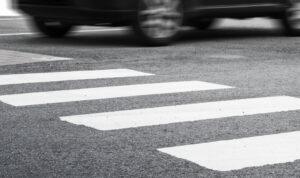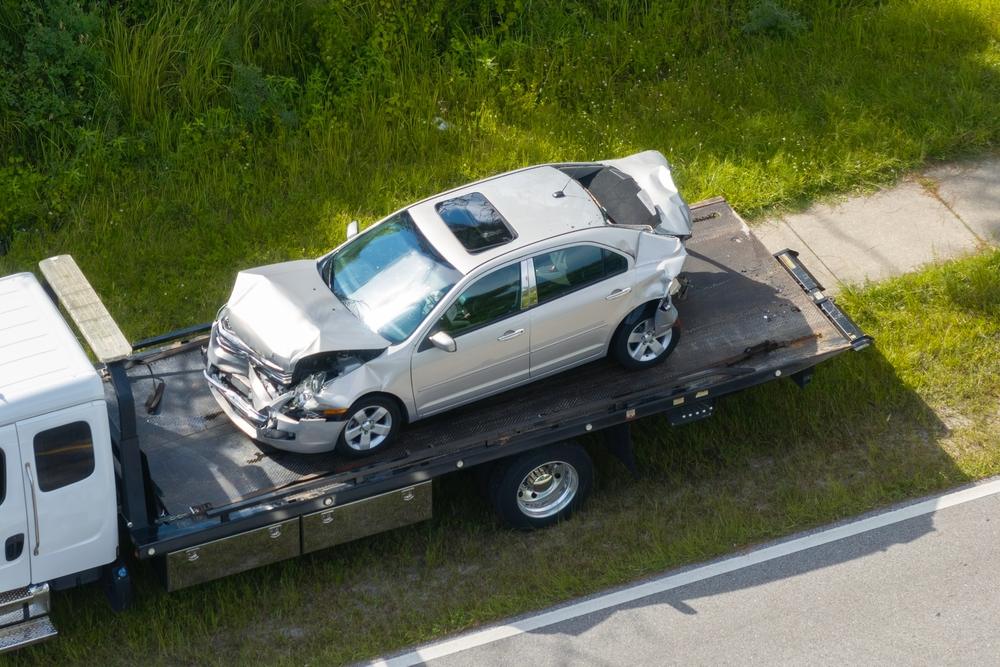
Illinois law requires drivers to stop and yield the right-of-way to pedestrians in crosswalks, whether marked or unmarked, when the pedestrian is in the driver’s half of the roadway or approaching closely enough to be in danger.
Drivers must remain stopped until the pedestrian has completely crossed their lane of traffic. In Naperville, these state laws apply to all roadways, and violations can result in traffic citations and liability for pedestrian injuries.
If you were struck by a vehicle while crossing in a crosswalk in Naperville, a Naperville pedestrian accident lawyer can investigate whether the driver violated stop-and-yield rules and help you pursue compensation for your injuries.
Illinois Vehicle Code Crosswalk Requirements
Drivers must yield the right-of-way to pedestrians crossing the roadway within any marked crosswalk or within any unmarked crosswalk at an intersection. The duty to yield arises when a pedestrian is upon the half of the roadway upon which the vehicle is traveling, or when the pedestrian is approaching so closely from the opposite half of the roadway as to be in danger.
When a vehicle is stopped at a crosswalk to permit a pedestrian to cross, drivers approaching from the rear cannot pass the stopped vehicle. This prevents drivers from speeding around stopped cars and striking pedestrians in the crosswalk.
Pedestrians have certain responsibilities as well, including obeying traffic control signals when present and not suddenly leaving a curb or place of safety and walking or running into the path of a vehicle that is so close the driver can’t yield.
Marked vs. Unmarked Crosswalks
Painted lines designate marked crosswalks, typically white stripes running perpendicular to traffic flow. These highly visible crossings make it clear where pedestrians should cross and where drivers should expect to encounter them.
Under Illinois law, the crosswalk is the extension of the sidewalk or shoulder across the intersection. If sidewalks meet at an intersection, a legal crosswalk exists whether or not it is marked with paint. Drivers must yield to pedestrians crossing at these unmarked locations just as they would at marked crosswalks.
The distinction matters because many drivers fail to recognize unmarked crosswalks and do not yield to pedestrians crossing at intersections without painted lines. This misunderstanding leads to accidents when drivers turn through intersections without watching for pedestrians or when they fail to stop before turning right on red.
When Drivers Must Stop vs. When They Must Yield at Naperville Pedestrian Crosswalks
The language of Naperville and Illinois law requires drivers to stop and yield to pedestrians in crosswalks, but the practical application often requires drivers to stop completely rather than merely slow down.
Courts have held that if a pedestrian must hesitate or stop to avoid being hit, the driver has failed to yield. Yielding is not the same as having the right to proceed if the pedestrian is not immediately in the roadway. Drivers must anticipate that pedestrians at crosswalks intend to cross and must stop to allow them to do so safely.
The practical rule is simple: if a pedestrian is in or approaching a crosswalk, drivers should stop and wait until the pedestrian safely crosses.
The “Half of Roadway” Rule
On a two-lane road with one lane in each direction, a pedestrian who steps off the curb into the crosswalk triggers the duty to yield for traffic in the nearest lane. Drivers in the opposite lane must also stop when the pedestrian reaches the center of the road or approaches closely enough to be in danger.
The “approaching so closely from the opposite half as to be in danger” language requires drivers to anticipate pedestrian movement. Drivers cannot wait until a pedestrian is directly in front of their vehicle to stop. If the pedestrian is progressing across the roadway and will reach the driver’s lane before the car passes through the crosswalk, the driver must stop.
This stop-and-yield pedestrian crosswalk rule in Naperville prevents the dangerous situation where drivers in far lanes continue through crosswalks while pedestrians are still crossing, forcing pedestrians to stop in the middle of the road or rush to avoid being struck.
Pedestrian Responsibilities at Crosswalks
Pedestrians should use marked crosswalks where available rather than crossing mid-block at unmarked locations. Pedestrians must not suddenly leave a curb or place of safety and walk or run into the path of a vehicle so close that the driver can’t yield.
Pedestrians should make themselves visible, especially at night, by wearing light-colored or reflective clothing when possible and carrying lights or reflective devices if crossing in darkness. While failure to maximize visibility is not necessarily negligence, it may affect comparative fault analysis.
Pedestrians should make eye contact with drivers when possible to ensure drivers have seen them before proceeding. However, pedestrians are not required to wait indefinitely for drivers to stop. If a pedestrian has entered the crosswalk and has the right-of-way, drivers must yield.
Contact Charlie Therman for Help With Your Naperville Crosswalk Accident Case
Drivers who fail to stop and yield at crosswalks in Naperville must be held accountable for the serious injuries they cause. With 75 years of combined legal experience, our family-oriented firm understands the life-changing impact of pedestrian accidents and provides compassionate representation while aggressively pursuing maximum compensation.
Choose Charlie and let us handle your crosswalk accident claim while you focus on recovering from your injuries. Contact us today for a free consultation about your Naperville pedestrian crosswalk accident. We’ll see if any stop-and-yield rules for Naperville pedestrian crosswalks were violated and help you get the compensation you need.





